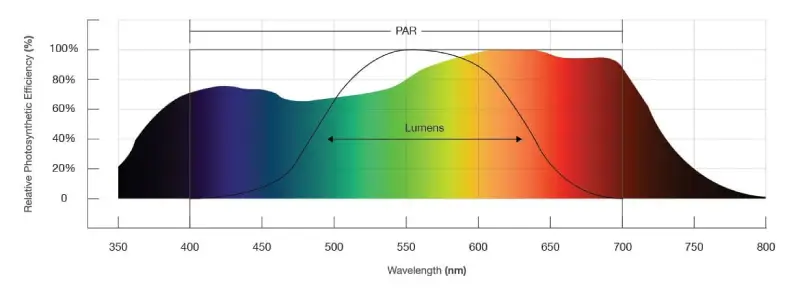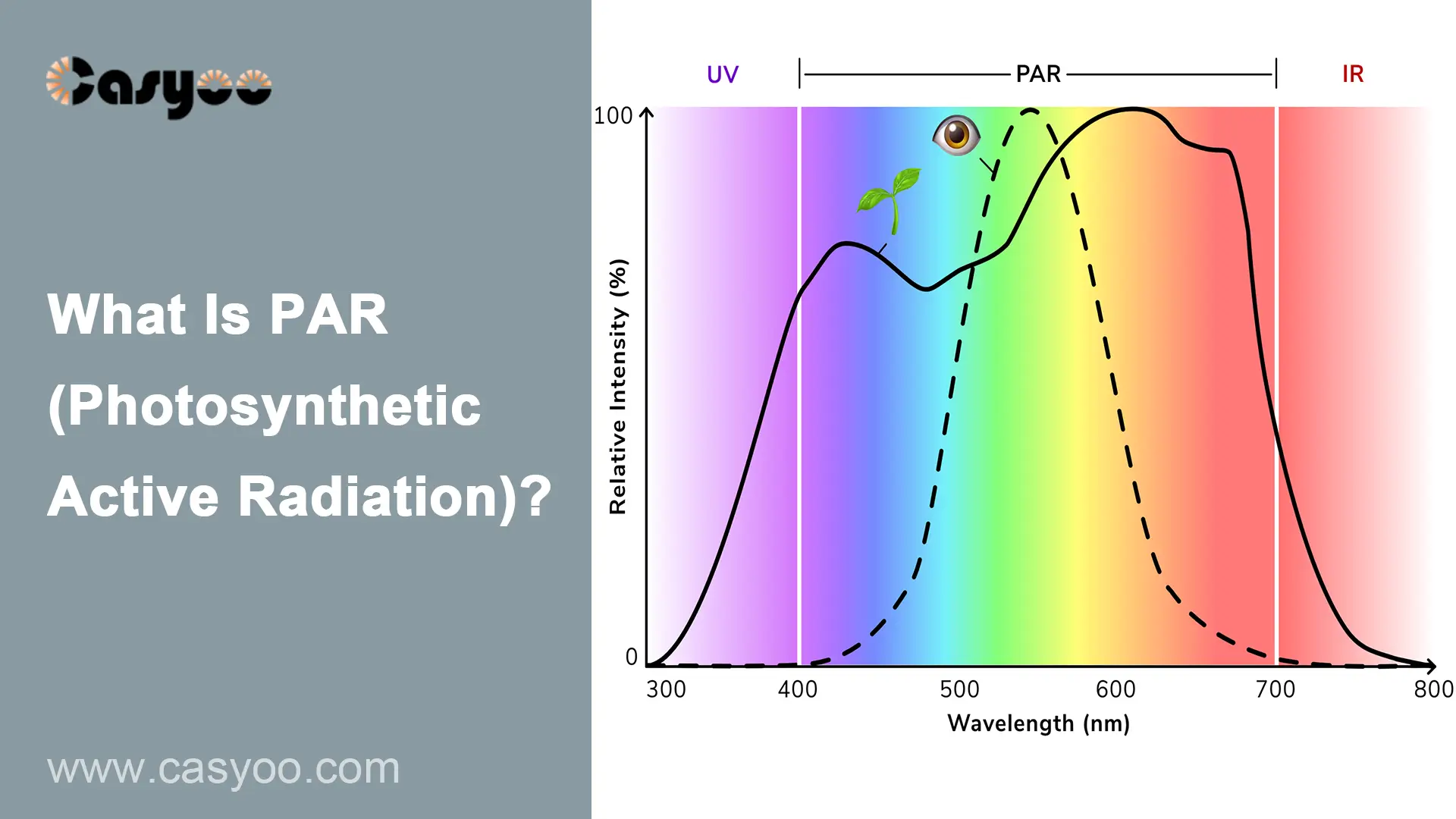What Is PAR?
PAR is the abbreviation for photosynthetic active radiation, which includes the visible wavelength of light from 400nm to 700nm. It is NOT a unit of measurement or “metric,” such as kilos, inches, or feet. Instead, it specifies the kind of light—referred to by scientists as “electromagnetic radiation”—that is necessary for plants to enable photosynthesis. Plants employ photosynthesis to transform light energy into chemical energy, which serves as their food source and allows them to grow and flourish.
So, the first thing you need to know about PAR is that it is NOT a measurement; rather, it is the portion of the electromagnetic radiation spectrum that is helpful to plants to initiate photosynthesis. PPF, PPFD, and DLI are what really matter.
When choosing a lighting fixture for your crops, there are three measurements that are crucial to consider:
- How much PAR, measured as photosynthetic photon flux (PPF) does the lighting emit?
- How much PAR, measured as photosynthetic photon flux density (PPFD), is reaching the plants?
- How much energy does the lighting require in order to provide PAR for the plants? The photosynthetic photon effectiveness (PPE) serves as the indicator for this.
Lumens vs PAR

In the past, radiant flux (power), which is the total amount of visible light measured in Watts (or J/s), was used to measure human-centric lighting. Even now, with the advent of LEDs, we still refer to lights by their wattage, as in the case of the former incandescent lights (30W, 80W, etc.).
This meter is out of date and misleading because invisible radiation increases can cause light power values to rise. For instance, a light producing a lot of red and violet light may also have a high total radiant flux. Even yet, the light would appear far dimmer than a comparable light that might output more in the green and yellow wavelengths because the human eye is more sensitive to these colors.
In 2024, luminous flux—a unit of measurement for light brightness—will be far more important. Lumens are used to express this flux. It is comparable to radiant flux, but it is weighted based on how sensitive our eyes are to green and yellow light. Luminous flux is therefore a poor indication of how beneficial light is to plants since red and blue light are more important to crops.
All in all, luminous flux or lumen ratings are not a useful marketing tool for grow lights. Other lumen-based metrics such as candelas, lux, and foot candles are also the same. They are excellent for human usage, but other than serving as a point of reference, they are worthless in gardening.




